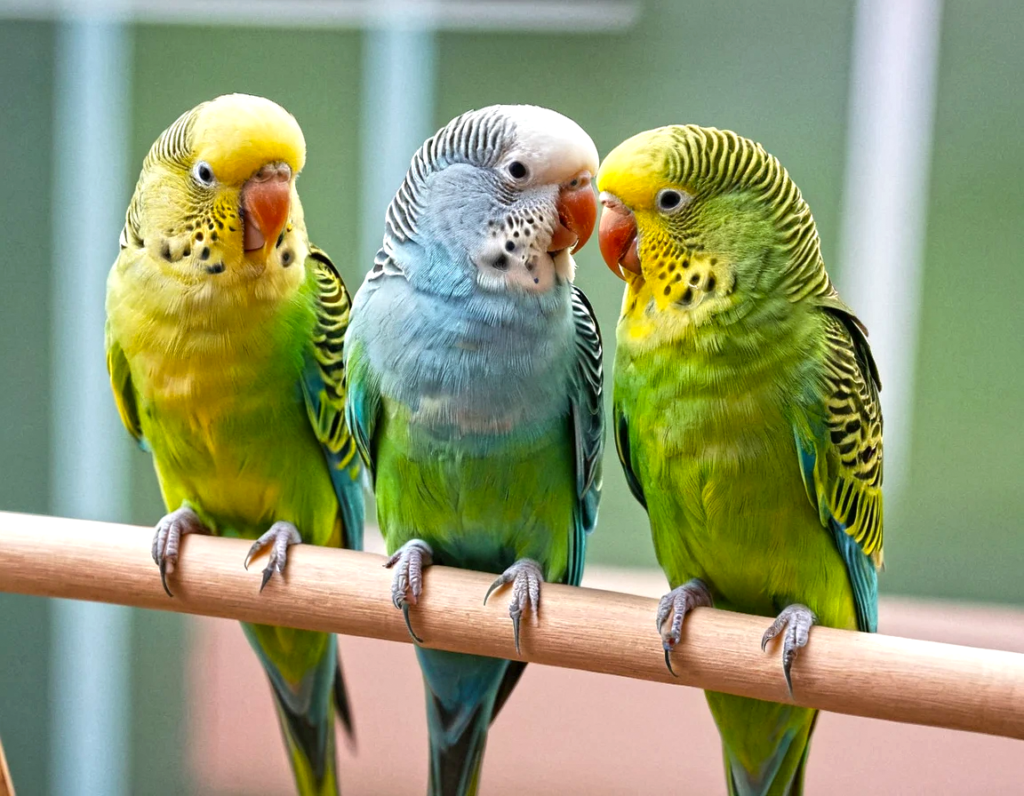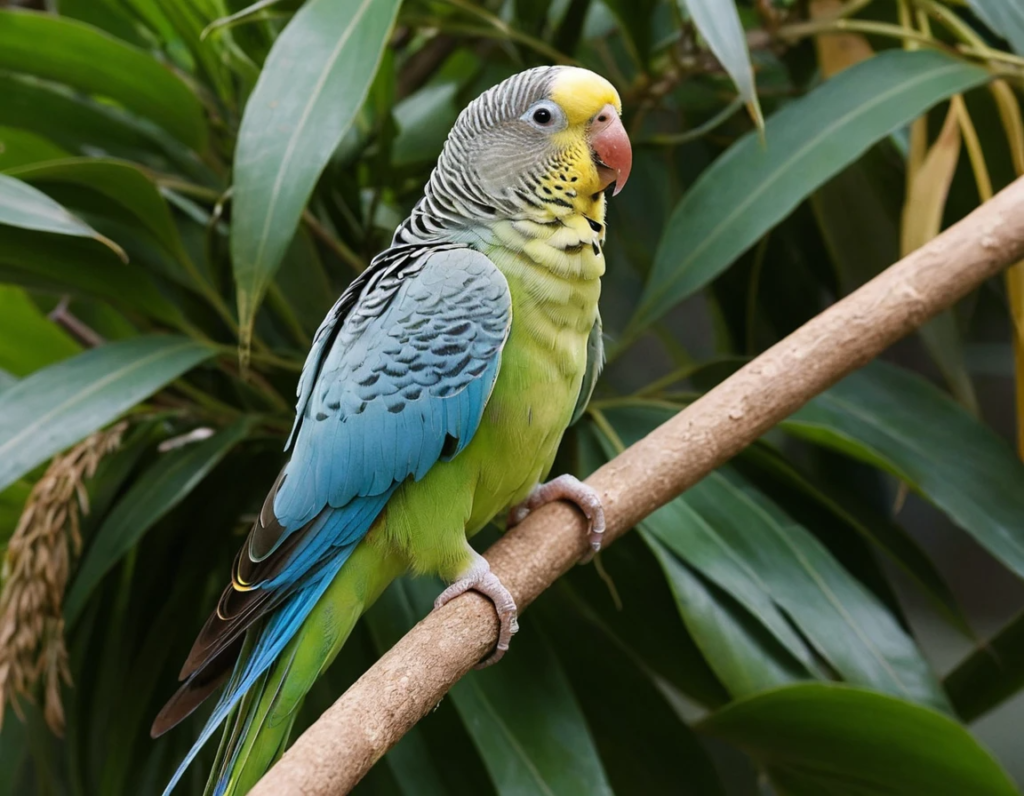
So, you’ve decided to welcome a feathery little chatterbox into your life? Congratulations! Parakeets are wonderful companions—cute, entertaining, and surprisingly full of personality. But before you start picking out tiny bird-sized furniture (okay, maybe that’s excessive), you need to know where to find the right parakeet for adoption.
Animal Shelters & Bird Rescues
Believe it or not, shelters and bird rescues often have parakeets looking for new homes. Many people don’t realize that birds, like cats and dogs, can end up in rescues due to changes in their owner’s circumstances. Adopting from a shelter gives a second chance to a bird that truly needs a loving home. Plus, you’ll feel like a hero—cape optional.
How to Find Them:
- Check your local animal shelters’ websites.
- Look for dedicated bird rescues in your area.
- Browse sites like Petfinder or Adopt A Pet for available birds.
Rehoming from Private Owners
Sometimes, people need to find new homes for their parakeets due to allergies, moving, or simply realizing that birds require more attention than they expected. (Yes, Polly does want a cracker, but Polly also wants daily interaction.)
Where to Look:
- Facebook groups and community forums
- Craigslist or similar classifieds (but be cautious—avoid sketchy sellers!)
- Ask around—someone you know might know someone looking to rehome their bird.
Ethical Breeders
If you prefer a young parakeet and want to raise one from the start, a responsible breeder is a good option. Ethical breeders prioritize their birds’ health and socialization, meaning you’ll get a happy, well-adjusted bird. Just make sure you’re not supporting a bird mill (yes, that’s a thing). If the breeder hands you a bird like it’s a fast-food order, run.
How to Find a Good Breeder:
- Look for reviews and recommendations online.
- Visit the breeder and check the bird’s living conditions.
- Ask questions! A good breeder will happily answer them.
Pet Stores (Proceed with Caution)
Sure, pet stores have parakeets, but not all are reputable. Many chain pet stores get their birds from large-scale breeders with questionable practices. However, some local pet shops work with ethical breeders and take great care of their birds.
What to Look For:
- Clean cages and healthy-looking birds
- Staff who are knowledgeable about parakeet care
- Birds that are active, alert, and not terrified of humans
Bird Clubs & Avian Societies
Joining a local bird club is a great way to meet experienced bird owners. Sometimes, these clubs have members looking to rehome parakeets or can guide you to trusted sources for adoption. Plus, you’ll make some bird-loving friends who won’t judge you for talking to your parakeet in a baby voice. (We all do it.)
Final Thoughts
Parakeet adoption isn’t just about picking out the cutest bird (though, let’s be real, they’re all adorable). It’s about finding a healthy, well-socialized companion and making sure you’re ready for the responsibility. Whether you adopt from a rescue, a rehoming situation, or a reputable breeder, the most important thing is giving your new feathery friend a loving and stimulating home.
Now, go forth and find your perfect parakeet! Just don’t expect them to listen to all your life advice—they tend to have minds of their own.
Parakeet Care for Beginners: A Fun and Easy Guide
So, you’ve decided to bring home a parakeet? Congratulations! You’re about to have a tiny, feathery companion who will chirp at you, judge your fashion choices, and possibly learn to say embarrassing words at the worst possible moments. But before you start dreaming of deep heart-to-heart conversations with your bird, let’s talk about the basics of parakeet care.
Setting Up the Perfect Home
Your new friend needs a comfy and safe space. No, they don’t need a luxury condo, but a properly sized cage is a must.
Choosing the Right Cage
- Get a cage that’s at least 18x18x24 inches—bigger is always better.
- Horizontal bars are ideal since parakeets love to climb.
- Place the cage in a quiet yet social area (not the kitchen—fumes are dangerous!).
- Add perches of varying thickness to keep their feet healthy.
Food: More Than Just Seeds
If you think your parakeet can live off a lifetime supply of seeds, think again! A well-balanced diet is key to keeping your bird happy and healthy.
What to Feed
- Pellets (nutrient-rich and better than an all-seed diet)
- Fresh fruits and veggies (apples, carrots, spinach – but NO avocado, it’s toxic!)
- Occasional treats (a little millet spray never hurt anyone)
- Fresh water daily (because even birds appreciate a clean drink)
Taming and Bonding: Winning Their Tiny Hearts
Now that your bird has settled in, it’s time to bond! Just remember, you’re basically a giant to them, so don’t take it personally if they act like you’re a villain in a bird horror movie at first.
How to Gain Their Trust
- Give them time to adjust before attempting interaction.
- Talk to them in a gentle, calm voice—dramatic opera singing might scare them.
- Offer treats from your hand, but let them come to you.
- Start with short training sessions and gradually increase as they get comfortable.
Exercise and Entertainment
A bored parakeet is a mischievous parakeet. Keep them entertained with fun activities.
Ways to Keep Them Busy
- Toys! (Mirrors, bells, shredding paper, and swings are great.)
- Out-of-cage time (Supervised flying time is essential.)
- Teach them tricks (Some parakeets even learn to talk!)
Parakeet Health: Signs to Watch For
Just like us, parakeets have good days and bad days. The key is knowing when something’s actually wrong.
Warning Signs of Illness
- Fluffed-up feathers all the time (not just for cuteness)
- Sitting at the bottom of the cage (bad sign!)
- Lack of appetite or excessive sleeping
- Sneezing or unusual breathing sounds
If you notice anything off, visit an avian vet. Don’t rely on Dr. Google!
The Joy of Parakeet Adoption
If you haven’t gotten your bird yet, consider parakeet adoption instead of buying from a pet store. Many birds need loving homes, and adoption is a great way to give a second chance to a feathery friend in need.
Final Thoughts
Taking care of a parakeet is fun, rewarding, and occasionally hilarious. Whether you’re in it for the endless chirping, the potential talking, or just a cute companion, with the right care, your parakeet will be a happy little member of your home.
Now go forth, parakeet parent! Just don’t be surprised if your bird starts side-eyeing your life choices soon. They can be judgy like that.
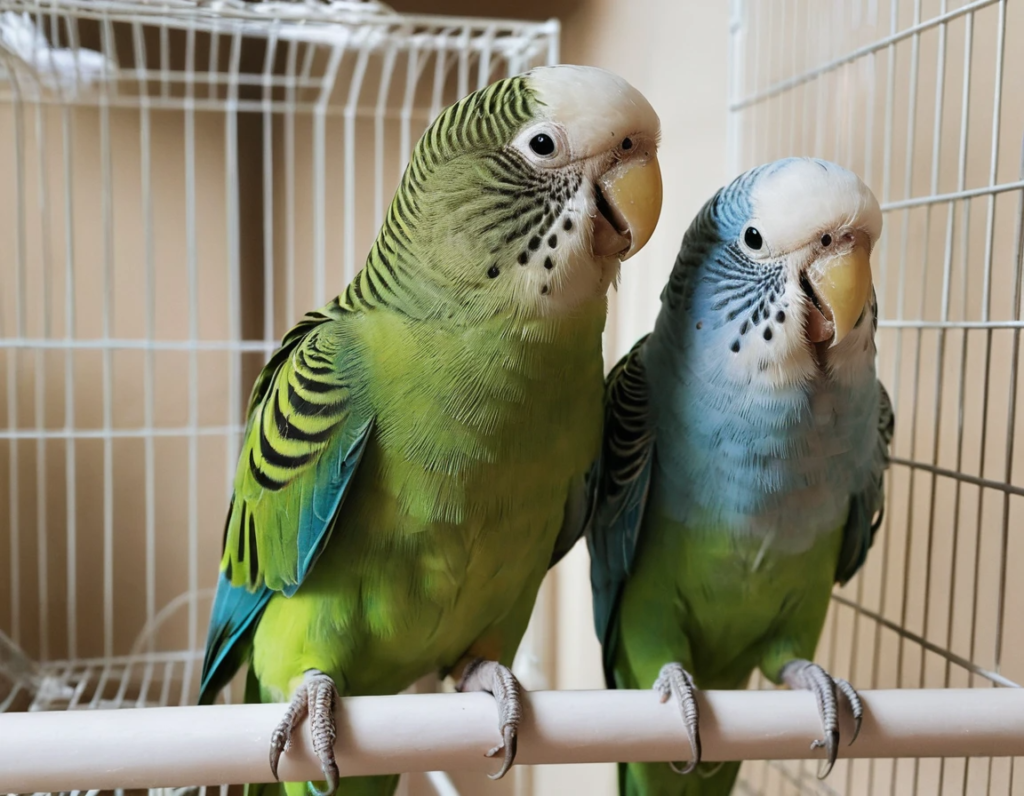
Best Cage for Parakeets: A Guide to a Happy Bird Home
So, you’ve decided to bring home a parakeet—congratulations! These tiny, chirpy creatures are full of personality and make fantastic companions. But before you start daydreaming about heart-to-heart conversations with your feathery friend, let’s talk about their home. Choosing the best cage for parakeets is crucial because, let’s be honest, your bird will be spending a lot of time there. You wouldn’t want to live in a closet, would you?
Size Matters—Bigger is Always Better
Parakeets might be small, but they need room to stretch their wings. The ideal cage size for one parakeet is at least 18x18x24 inches—and if you’re planning on parakeet adoption and getting a buddy (which is always a great idea), go even bigger. More space equals more happy chirps!
Cage Size Guidelines:
- Single parakeet: Minimum 18x18x24 inches
- Pair of parakeets: At least 30 inches wide
- Multiple parakeets: The bigger, the better!
If your parakeet’s cage is too small, expect some serious side-eye from your bird—yes, they do judge.
Bar Spacing: No Bird Jail, Please!
Parakeets love to climb, so make sure the bar spacing is no more than ½ inch apart. Anything wider and you might have an escape artist on your hands. While you may admire their skills, finding a parakeet perched on your toaster isn’t exactly ideal.
Shape and Design: Ditch the Round Cages
Those fancy round cages may look nice, but they are a big no-no for parakeets. Birds feel safer when they can find a corner to retreat to, and round cages can actually disorient them. Stick with a rectangular or square-shaped cage.
Must-Have Cage Features:
- Multiple perches for climbing and foot health
- Easy-to-clean tray because, let’s face it, birds can be messy
- Doors that are secure (no accidental jailbreaks!)
- Enough room for food and water bowls
Perches and Toys: Keeping Your Parakeet Entertained
Imagine living in an empty room with no furniture—boring, right? Parakeets need a variety of perches with different thicknesses to keep their feet healthy. Avoid using only smooth plastic perches; mix it up with wooden and rope perches.
And let’s talk toys! Your bird needs entertainment, so stock up on mirrors, bells, and shreddable toys. A happy parakeet is a playful parakeet, and keeping them engaged helps prevent boredom and stress.
Cage Placement: Location, Location, Location!
Choosing the right spot for your parakeet’s cage is just as important as the cage itself.
Best Spots for the Cage:
- A social area (but not too chaotic—your parakeet doesn’t need to hear your entire TV binge session)
- Away from direct sunlight and drafts
- Not in the kitchen (Teflon and non-stick cookware can release fumes that are deadly to birds!)
Final Thoughts
A well-chosen cage is the foundation of a happy, healthy parakeet. Whether you’re preparing for parakeet adoption or upgrading your bird’s current home, remember: bigger is better, bar spacing matters, and enrichment is key. Treat your bird’s cage like their personal penthouse, and you’ll have one chirpy, content little roommate!
Now, go forth and be the best parakeet parent ever—just don’t be surprised when your bird starts giving you opinions on home decor.
Parakeet Diet and Nutrition: Keeping Your Bird Healthy and Happy
So, you’ve brought home a parakeet (or you’re planning on parakeet adoption—which, by the way, is a great idea!). Now, let’s talk about what keeps these little feathery friends chirping with joy—food! A well-fed parakeet is a happy parakeet, and if you want yours to thrive (and not just survive), understanding their diet is key.
The Basics: More Than Just Seeds
If you think parakeets live on seeds alone, think again! A seed-only diet is like eating potato chips every day—delicious but not exactly balanced. To keep your bird healthy, you need to mix it up.
What Should a Parakeet Eat?
- Pellets: A great alternative to seeds, packed with vitamins and nutrients.
- Fresh Fruits & Veggies: Apples, carrots, spinach, and even bell peppers (just no onions or avocados—they’re toxic!).
- Grains: Cooked rice, quinoa, and whole grain bread in small amounts.
- Protein: Hard-boiled eggs, cooked lentils, or tiny bits of lean meat (yes, they can have a little taste!).
- Healthy Treats: Millet spray (in moderation—think of it like dessert).
Foods to Avoid (Unless You Want an Angry Vet Bill)
- Avocados (super toxic!)
- Chocolate & Caffeine (birds don’t need coffee to wake up chirpy)
- Dairy (parakeets are lactose intolerant—who knew?)
- Salty or Sugary Foods (they’re tiny creatures, and too much salt can harm them)
Hydration: Water is Life!
Parakeets need fresh, clean water every day. No, they don’t need fancy vitamin water or coconut water—just good old-fashioned H2O. Change it daily to keep things fresh.
Fun Ways to Feed Your Parakeet
- Food Skewers: Thread fruits and veggies on a skewer to make mealtime fun.
- Foraging Toys: Hide treats in paper rolls or puzzle feeders to keep their brains active.
- Hand Feeding: A great way to bond with your parakeet (but be prepared for them to steal from your plate when you’re not looking).
Final Thoughts
A well-balanced diet will keep your parakeet healthy, active, and full of personality. Whether you’re a seasoned bird owner or new to parakeet adoption, remember: variety is key, moderation is important, and yes—your parakeet will probably try to eat something they shouldn’t at some point (watch out!).
Now go forth and be the best parakeet chef ever—just don’t expect them to do the dishes!
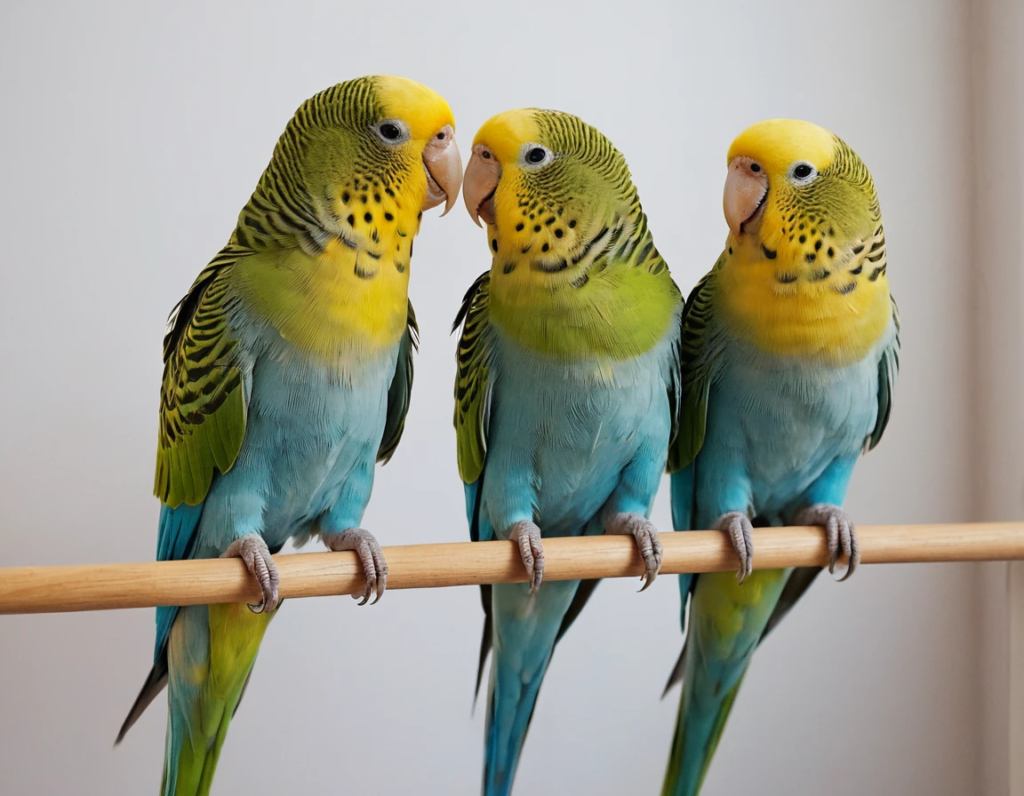
How to Tame a Parakeet: A Fun and Easy Guide
So, you’ve welcomed a new feathered friend into your home—congratulations! Whether you just went through a parakeet adoption or picked one up from a breeder, taming your parakeet is the key to building a strong bond. But let’s be real, your tiny bird probably thinks you’re a giant, scary monster at first. Don’t worry; with patience (and a few sneaky treats), you’ll be best buddies in no time.
Step 1: Give Your Parakeet Some Space
Imagine moving to a new home and immediately being forced to socialize—stressful, right? Your parakeet feels the same way. For the first few days, let them settle in. Talk to them in a soft, soothing voice so they get used to you. No sudden movements, no grabbing—just let them watch you from their cage like a tiny, feathery detective.
Step 2: Hand-Taming 101
Once your bird seems comfortable (aka, they’re not panicking every time you walk by), it’s time to introduce your hand. Here’s how:
- Step 1: Slowly place your hand inside the cage. Don’t rush—you’re not auditioning for a horror movie.
- Step 2: Hold a treat like millet or a piece of fruit. Your parakeet might ignore you at first. That’s okay!
- Step 3: Repeat this daily until your bird starts associating your hand with good things (aka, food).
Pro tip: If your parakeet refuses to take food from your hand, try bribery (kidding, but not really—millet works wonders).
Step 3: The Perch Trick
Before your parakeet hops onto your finger, start with a small wooden perch. Gently press it against their lower belly and say something like “Step up!” (Yes, birds can learn commands—just don’t expect them to pay rent.) Once they get the hang of stepping onto the perch, try using your finger instead.
Step 4: Let Them Explore Outside the Cage
Once your bird is comfortable perching on your hand, you can let them out of their cage for short, supervised flights. Make sure:
- Windows and mirrors are covered (so they don’t try to fly through an illusion—parakeets aren’t the best at spotting glass).
- Other pets are in another room (unless you want an unplanned parakeet adventure).
- They know how to return to their cage (use food as a guide if needed).
Step 5: Be Patient and Keep Training Fun
Taming a parakeet takes time. Some birds warm up in a few days; others take weeks. The key is consistency and positive reinforcement. If your parakeet adopts you as their favorite human, congrats! If not, well… they’ll still probably scream at you when their food bowl is empty.
Final Thoughts
Whether you’re new to parakeet adoption or just looking to bond with your bird, taming takes patience and lots of millet bribery. Keep things fun, respect your parakeet’s boundaries, and soon enough, you’ll have a tiny, feathery friend who trusts you (or at least tolerates your presence).
Now go forth and tame that parakeet—just don’t be surprised if they end up taming you instead!
Parakeet life span and health issues:
So, you’re either thinking about parakeet adoption or already have a tiny, chirpy companion—great choice! These little birds bring a lot of joy, but like any pet, they come with responsibilities. One big question people often have is: How long do parakeets live, and what health issues should I watch for? Let’s break it down in a fun, easy way.
How Long Do Parakeets Live?
If you take good care of your parakeet (which I assume you will, because you’re reading this), they can live anywhere from 7 to 15 years. Yep, that’s a solid commitment! Some even reach their mid-teens if they get proper nutrition, exercise, and the occasional “Who’s a pretty bird?” pep talk.
Factors That Affect Lifespan
- Diet: A balanced diet (not just seeds!) keeps them healthy.
- Exercise: They need space to fly and move around.
- Genetics: Some parakeets are just built tough.
- Vet Care: Routine check-ups can catch issues early.
Common Parakeet Health Issues
Like any pet, parakeets are prone to a few health problems. The good news? Many of them are preventable with the right care.
Respiratory Issues
If your parakeet sounds wheezy or is sneezing a lot (without telling you “Bless you” in return), it might have a respiratory infection. Causes include:
- Poor air quality (dust, smoke, or strong odors)
- Bacterial infections
- Vitamin A deficiency (yep, veggies are important!)
Mites and Parasites
If your bird is scratching like they just heard the word “taxes,” they might have mites. Symptoms include:
- Flaky skin around the beak
- Constant itching
- Restlessness at night (because mites are rude and attack when birds are trying to sleep)
Obesity
Yes, even birds can get a little chunky. Overfeeding or lack of exercise can lead to obesity, which increases the risk of liver disease.
- Solution? Less junk, more movement! Let your bird fly around daily and offer a variety of healthy foods.
Feather Plucking
If your parakeet starts looking patchy like an old stuffed toy, they might be plucking their feathers. Causes include:
- Stress (yes, birds get stressed too!)
- Boredom—keep them entertained!
- Skin infections or mites
Beak Problems
Overgrown or cracked beaks can make eating difficult. Chew toys and cuttlebones help keep their beak in shape (literally).
Keeping Your Parakeet Healthy
A happy, healthy parakeet is an active one! Here are some quick tips:
- Balanced Diet: Fresh fruits, veggies, pellets, and a few seeds.
- Clean Water: Change it daily.
- Exercise & Socialization: Let them fly, talk to them, and play.
- Regular Vet Visits: Prevention is better (and cheaper) than emergency treatment.
Final Thoughts
Whether you’re considering parakeet adoption or already own one, knowing how to keep them healthy will ensure they live a long, happy life. Pay attention to their behavior, keep their diet balanced, and most importantly—enjoy their company!
Now, go check on your parakeet! If they give you side-eye, you’re doing something right.
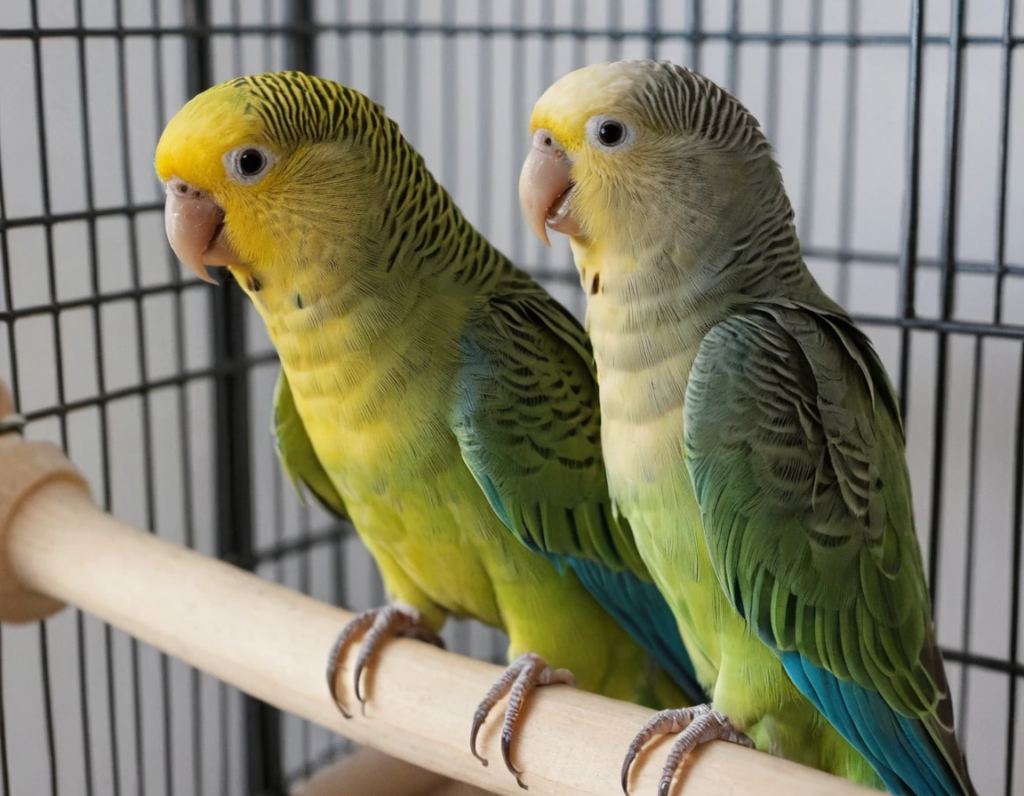
Parakeet Behaviour and Communication:
So, you’ve recently gone through parakeet adoption or are thinking about bringing home a tiny, chirping companion—great choice! Parakeets may be small, but their personalities are anything but. If you’ve ever wondered, “What is my bird trying to tell me?”, you’re in the right place.
Parakeet Body Language: What Those Feathers Are Saying
Parakeets don’t speak fluent English (yet), but their body language tells you everything you need to know.
The Happy Parakeet
- Fluffed feathers: A relaxed, comfy bird enjoying life.
- Beak grinding: This is the parakeet equivalent of purring—total contentment.
- Head bobbing: Excitement! Or just showing off. Either way, it’s adorable.
- Chirping and singing: A happy parakeet has lots to say. If yours is singing a full concert, congratulations, you have a feathered superstar.
The Grumpy or Scared Parakeet
- Flattened feathers & a stiff posture: “Back off, human.”
- Hissing: Yes, birds can hiss, and no, it’s not a sign of affection.
- Biting: If your parakeet decides your finger looks snackable, they might be scared or annoyed.
- Frantic flying: A sign of distress. Make sure your bird feels safe.
Parakeet Sounds: The Language of Chirps
The Talkative Bird
Some parakeets pick up words and phrases (especially if you bribe them with treats). Even if they don’t talk, their chirps and whistles mean they’re happy and engaged.
The Quiet, Observant Bird
Not all parakeets are chatterboxes. Some prefer soft peeps or quiet mutterings, and that’s okay too. If your bird is suddenly too quiet, though, check on their health.
Angry or Distressed Sounds
- Loud squawking: “I am NOT pleased.”
- Sharp, short chirps: Could be a warning or an urgent request (usually for food or attention).
- Screaming: If your parakeet screams frequently, check if something’s stressing them out—like a cat plotting nearby.
How to Bond Through Communication
Understanding parakeet behavior helps you bond with your little friend. Here’s how to build a strong connection:
- Talk to them daily: They may not respond in English, but they appreciate the effort.
- Respect their space: If they seem irritated, give them time.
- Use treats as motivation: Positive reinforcement works wonders.
- Mirror their behavior: If they bob their head, try doing it back! (Warning: This may confuse your family.)
Final Thoughts
Parakeets have a lot to say, even without words. Whether you’re new to parakeet adoption or already have an opinionated bird ruling your home, learning their language helps you connect on a deeper level. Pay attention to their chirps, fluffs, and bobs—you might just unlock the secret to a happy, chatty parakeet
Should You Get One or Two Parakeets?
So, you’ve decided on parakeet adoption—great choice! But now comes the big question: should you get just one parakeet or go for a dynamic duo? While one parakeet can be an affectionate companion, two can provide endless entertainment (and a little chaos). Let’s break it down and help you decide which option suits you best.
The Case for a Solo Parakeet
If you’re thinking of getting just one parakeet, here’s what to consider:
Stronger Bond with You
A single parakeet will likely see you as their flockmate, which means they’ll bond more closely with you. They’ll chirp when you enter the room, enjoy head scratches, and maybe even learn a few words (because who doesn’t want a tiny bird calling them “pretty” every day?).
Easier to Train
With no feathery friend to distract them, solo parakeets tend to be more receptive to training. Want a bird that steps up on command? A single parakeet is your best bet.
Less Noise and Mess
Parakeets are lively little creatures, but one bird equals half the mess and half the noise of two. If you prefer a slightly quieter home, one parakeet might be the way to go.
The Perks of a Parakeet Pair
Now, if you’re considering getting two parakeets, here’s why that could be a great idea:
Built-in Social Life
Parakeets are highly social birds. Having a second bird means they’ll always have company, even when you’re busy. No guilt-tripping chirps when you leave for work!
Fun to Watch
Two parakeets together are endlessly entertaining. They’ll preen each other, chatter away, and occasionally have funny little squabbles over who gets the best perch (spoiler: they both think they deserve it).
Happier and More Engaged
Parakeets thrive in flocks, so having a buddy can prevent loneliness and boredom. A happy parakeet is a healthy parakeet!
What About the Downsides?
- More Cleaning: Two birds mean twice the mess. Be ready for extra feathers and the occasional food fight.
- Bonding with You Might Be Harder: With a friend around, they may be less interested in human interaction.
- Bigger Cage Needed: Two birds need more space, so be prepared to upgrade to a roomy setup.
The Verdict
If you want a close bond with your parakeet and have plenty of time to interact, a single bird is a great choice. But if you’re worried about loneliness and love the idea of a lively, interactive pair, two parakeets might be the way to go.
Either way, parakeet adoption is a fantastic decision—you just have to decide if you want a solo superstar or a dynamic duo!
Now, go forth and make your feathery decision. (And maybe brace yourself for the possibility of bird gossip if you go with two!)
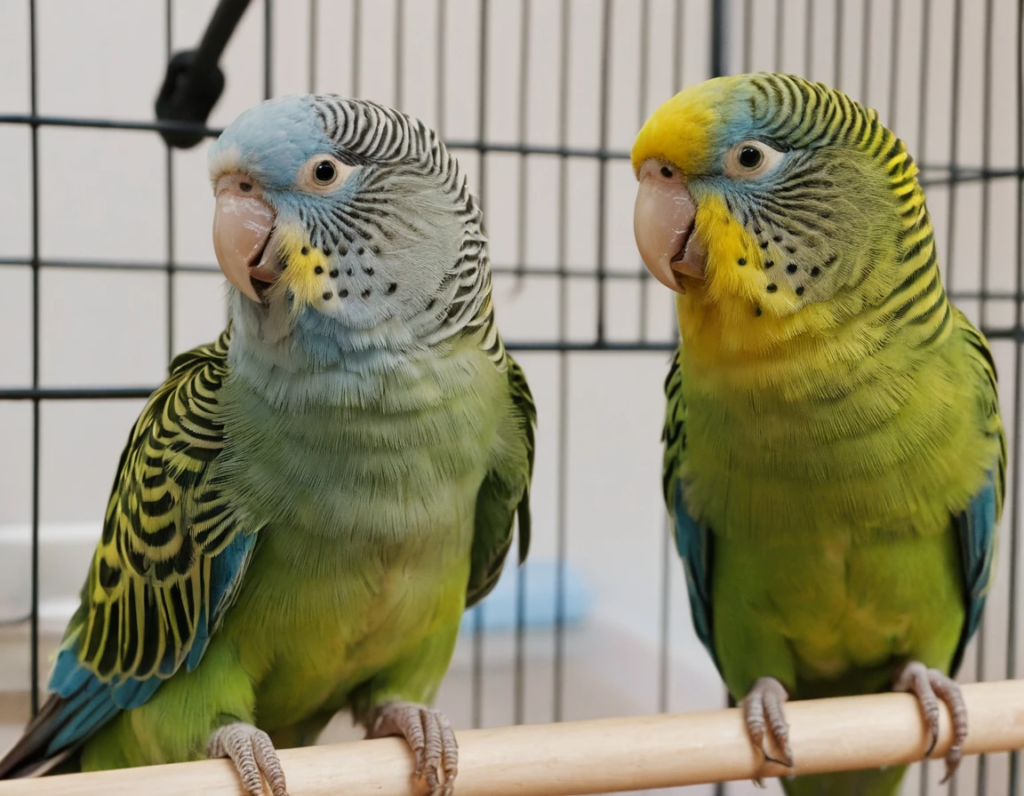
How to Introduce a Parakeet to a New Home:
So, you’ve taken the big step into parakeet adoption—congratulations! But now comes the next challenge: helping your new feathered friend settle into their new home. Moving can be stressful for anyone, and that includes tiny birds with big personalities. Here’s how to make their transition smooth and drama-free (well, as drama-free as a parakeet can be).
Step 1: Set Up Their Cage Beforehand
Imagine moving into a new house only to find there’s no furniture, no food, and no Wi-Fi. Not fun, right? Your parakeet feels the same way. Before bringing them home, make sure their cage is set up with:
- A cozy perch (or two!)
- Fresh food and water
- A few toys for entertainment (because who doesn’t love a good swing?)
Step 2: Keep Things Calm
Parakeets are curious but cautious creatures. When you bring them home, avoid loud noises, sudden movements, and any overenthusiastic welcome parties. No offense, but your bird is probably not in the mood for a meet-and-greet just yet.
Step 3: Give Them Time to Adjust
Your parakeet might be a bit shy at first, clinging to a corner of the cage like they just entered a haunted house. That’s normal! Give them a few days to settle in before trying to handle them. Speak to them softly, let them observe their surroundings, and let them make the first move (they’ll come around—trust me).
Step 4: Introduce Yourself Slowly
Now that your parakeet is starting to feel at home, it’s time to start bonding. Here’s how:
- Talk to them in a gentle voice (bonus points if you sing to them—parakeets love a good concert).
- Offer treats through the cage bars.
- Let them get used to your presence before attempting to interact directly.
Step 5: The First Flight
Once your parakeet seems comfortable and trusts you, it’s time for supervised out-of-cage time. Make sure:
- Doors and windows are closed (no unexpected escapes!).
- No mirrors or glass surfaces are exposed (parakeets aren’t great at identifying “invisible walls”).
- You stay calm—flailing arms are not reassuring.
Final Thoughts
Bringing a parakeet into your home is exciting, but patience is key. Whether you’re new to parakeet adoption or just adding another feathered friend to your family, giving them a gentle, stress-free introduction will set the stage for a happy, chirpy life together.
So, take it slow, enjoy the process, and get ready for a whole lot of adorable head tilts and happy chirps. Your new best friend just needs a little time to adjust—and maybe a few treats along the way!
Parakeet Toys and Enrichment:
So, you’ve gone through parakeet adoption—congrats! Now, it’s time to make sure your new feathery roommate doesn’t get bored. Parakeets are playful, curious little creatures, and without enough stimulation, they might resort to some creative (read: slightly destructive) behavior. The good news? There are plenty of fun toys and enrichment activities to keep them entertained.
Why Do Parakeets Need Toys?
Imagine being stuck in a room with nothing to do all day. No TV, no phone, not even a crossword puzzle. Sounds awful, right? That’s exactly how a parakeet feels without proper enrichment. Toys help them:
- Stay mentally and physically active
- Prevent boredom and stress
- Exercise their beaks (so your furniture doesn’t become the next chew toy)
- Have a blast (because every parakeet deserves fun!)
The Best Types of Parakeet Toys
Chew Toys – Because Beak Workouts Are a Thing
Parakeets love to chew—on everything. Providing them with safe, chewable toys prevents them from nibbling on things they shouldn’t. Look for:
- Wooden toys (make sure they’re bird-safe!)
- Vine balls
- Shreddable paper toys
Swings and Perches – For That Parakeet Gymnast Life
Swings aren’t just fun; they help with balance and leg strength. Your bird might even develop some impressive acrobatic moves!
- Wooden or rope swings
- Natural branch perches (great for foot health!)
Puzzle Toys – Yes, Birds Like Brain Games Too
Parakeets are smarter than you think! (Okay, maybe not college-degree smart, but still pretty sharp.) Puzzle toys keep them engaged and challenge their little bird brains.
- Treat-dispensing toys
- Foraging boxes
- Bell and ball puzzles
Mirrors and Bells – Because Every Bird Needs a Stage
Some parakeets love mirrors, while others think their reflection is an annoying twin. Either way, mirrors and bells provide entertainment.
- Small mirrors (watch to see if they become too obsessed)
- Bells for some musical fun (your ears will adjust, promise)
DIY Toys – Because You’re Crafty Like That
Not all great toys need to be store-bought. Some of the best enrichment ideas come from simple household items:
- Paper towel rolls (great for shredding!)
- Beads on a string
- Popsicle sticks for chewing
Rotating Toys: The Secret to Eternal Fun
Even the best toy gets boring after a while. Rotate your bird’s toys every week or so to keep things fresh. This way, every toy feels like a new toy!
Final Thoughts
Parakeets thrive when they have plenty to do. Whether you’ve just started your parakeet adoption journey or have a seasoned feathered friend, investing in fun and enriching activities will keep them happy and healthy. So go ahead, spoil your little buddy with an exciting toy collection—just don’t be surprised if they still think your shoelaces are the best plaything ever!
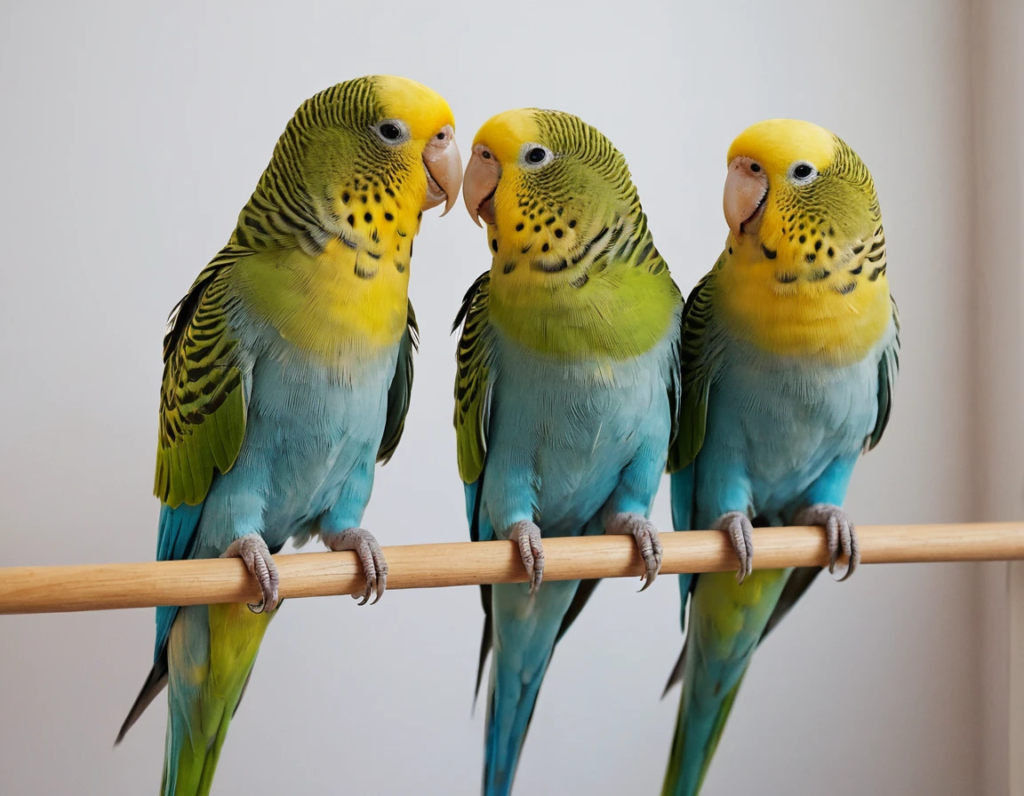
(FAQs) about parakeet adoption
General Questions
Is a parakeet a good pet for beginners?
Answer: Yes! Parakeets are friendly, relatively easy to care for, and make great companions for first-time bird owners.
Where can I adopt a parakeet?
Answer: You can adopt a parakeet from animal shelters, bird rescues, or reputable breeders. Some pet stores also offer adoptions.
How much does it cost to adopt a parakeet?
Answer: Adoption fees vary but typically range from $20 to $100, depending on the rescue or breeder. Initial setup costs (cage, food, toys) can add another $100–$200.
How long do parakeets live?
Answer: Parakeets can live between 7 to 15 years with proper care, diet, and a safe environment.
Should I get one parakeet or two?
Answer: Parakeets are social birds and thrive in pairs. However, if you have plenty of time to interact, a single parakeet can also be happy.
Care and Housing
What size cage does a parakeet need?
Answer: A minimum of 18”x18”x24” is recommended for one parakeet. Bigger is always better!
Do parakeets need to be let out of their cage?
Answer: Yes! Supervised flight time outside the cage keeps them happy and healthy.
What should I feed my parakeet?
Answer: A balanced diet includes high-quality pellets, fresh vegetables, seeds (in moderation), and clean water.
Can parakeets eat fruit?
Answer: Yes, but in moderation. Safe fruits include apples (without seeds), bananas, berries, and melons.
Do parakeets need toys?
Answer: Absolutely! Chew toys, swings, mirrors, and foraging puzzles help keep them entertained and prevent boredom.
Health and Safety
How do I know if my parakeet is sick?
Answer: Signs of illness include fluffed-up feathers, lethargy, loss of appetite, unusual droppings, and breathing issues. If you notice any of these, visit a vet.
Do parakeets need regular vet check-ups?
Answer: Yes! Annual vet visits help catch any health issues early.
Can parakeets get along with other pets?
Answer: Be cautious. Cats and dogs can stress or harm birds, so always supervise interactions.
Is it normal for a parakeet to lose feathers?
Answer: Molting is normal, but excessive feather loss could indicate stress or illness.
Do parakeets need baths?
Answer: Yes! Offer a shallow dish of water or mist them with a spray bottle to help keep their feathers clean.
Training and Behavior
Can parakeets learn to talk?
Answer: Some parakeets can mimic words and sounds, but not all will. Males are usually better at talking than females.
How do I tame my new parakeet?
Answer: Start by talking to them softly, offering treats, and slowly introducing your hand inside the cage. Patience is key!
Why is my parakeet chirping so much?
Answer: Chirping is normal—it means they’re happy! However, excessive screaming could indicate boredom, loneliness, or distress.
How do I introduce a new parakeet to an existing one?
Answer: Keep them in separate cages at first. Let them observe each other from a distance before gradual supervised introductions.
What if I change my mind after adopting?
Answer: If you rrealisea parakeet isn’t the right fit, contact the rescue or shelter. Never release a parakeet into the wild—they won’t survive.

